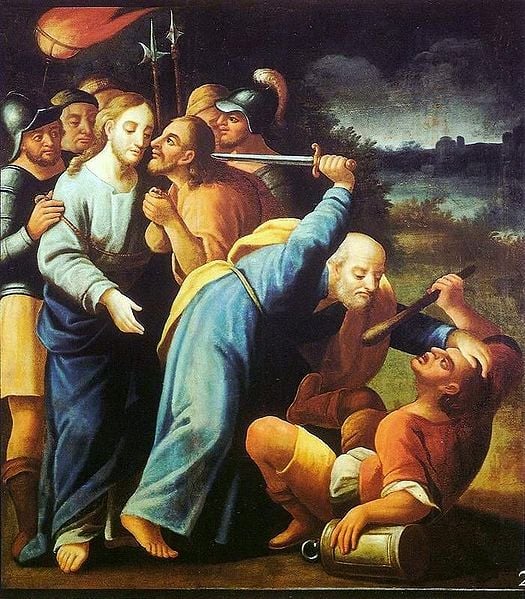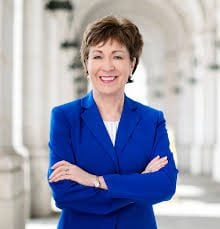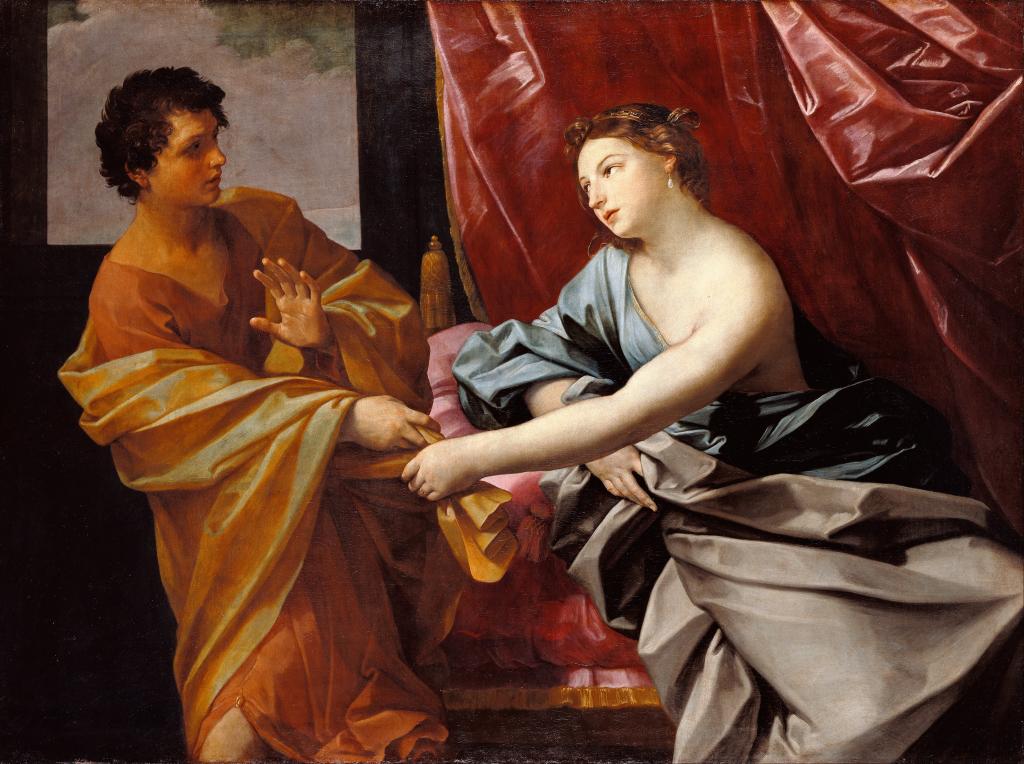Fairly recently, some Mormon feminists have generated a lot of discussion about women and the priesthood with a campaign for female ordination. Ironically, as some Mormon feminists lobby for integrating women into what’s been characterized as a patriarchal institution, other news outlets like the New York Magazine and the Atlanticand the HuffPo are debating what may be a growing trend in women choosing to leave the workplace to embrace the domestic sphere.
The differing views over ordination have highlighted once again the diversity within Mormon feminism (and the difficulty in using this umbrella term to meaningfully encompass them). I think the discussion has been fruitful, and in the hope of making it more so, I want to highlight a couple “knots” that I think we could consider as we all engage with each other’s questions and thoughts about female ordination.
So, for one: I have noticed that many of the arguments for ordaining women downplay the role of childbirth in efforts to paint women and men symmetrically. Because some traditional explanations for a male priesthood have appealed to women’s “motherhood,” advocates for female ordination respond by arguing that motherhood and fatherhood—not priesthood— is the proper pairing. Thus, equality requires that women be ordained to the priesthood just as men. While there’s no question that fatherhood and motherhood are equally important roles and identities, motherhood involves a component that fatherhood simply does not: birth.
As it stands, Mormonism gives pretty weighty significance to childbirth—often described as a unique co-participation with God. Most feminists dismiss these kinds of sentiments as hyperbolic consolation prizes for excluding women from the power structure of the Church. While comparing childbirth and the priesthood may be comparing apples to oranges, it seems equally unhelpful to say there’s no apple. In other words, I wouldn’t be quick to dismiss the significance of childbirth. Women bear a weighty burden of pain, mortal risk, and sacrifice to bring a child into the world, even in today’s medically institutionalized world. While some feminists may not view childbirth as a spiritual act laden with holiness or sacrifice, I find such a view more theologically compelling than to grant childbirth as a mere act of biological happenstance too trivial to distinguish it from fatherhood. If childbirth is nothing more than biological happenstance, it seems to me that women got the raw end of the deal.
It would be more theologically satisfying to me that childbirth hold some meaning beyond biological cause and effect. What that meaning may be, I can’t personally speak to, not yet having had children. But many (not all) women have found it to be a spiritually transformative, incomparable experience–even with, or perhaps partly because of, the pain and sacrifice. To be clear: I am not arguing that a woman’s capacity for childbirth logically requires their exclusion from administrative or leadership roles; I am simply saying that feminist arguments aren’t doing women a service by ignoring it. There might be better rapport if they consider their fellow sisters and feminists who see childbirth—whether their own or their fellow sisters’—as a unique and sacred part of womanhood, their covenantal relationship with God (or perhaps Heavenly Mother), and their priestesshood.
Not only has childbirth represented a spiritually empowering and unique role for many women—it has also provided rich opportunities for Mormon women to practice ritual healing and anointing in the past. As is becoming more well-known, Mormon women performed healing blessings to their husbands, children, and other women, well up until the mid-twentieth century—but their primary area of ministration was for childbirth. Women performed washings, anointings, and blessings on those in labor or confinement. As another historian pointed out, Mormon midwifery was viewed as a sacred calling. By ignoring childbirth in an effort to prove that female ordination is a necessary equalizer, these feminists are cutting themselves off from one of their strongest historical ties to priest[ess]hood ordinances. And to me, it is a shame to sacrifice a rich and unique part of our heritage—and possibly, our future, if tides change again to bring these practices back—in what may be a hasty overcorrection.
Another issue that needs to be ironed out for a more productive discussion on female ordination, in my opinion, is the concept of priesthood itself. The sleek websites and self-evident sounding slogans belie the complexity of what ‘priesthood’ actually is. I’d go so far as to say I’m not sure many Mormons could really pin it down, though I’m sure they’d locate it somewhere in a web of service, leadership, power, hierarchy, sacrifice, ordinances, and administration. Many current feminists seem to treat the priesthood as an entire package deal that should simply be transferred over to women.
The concept of priesthood seems a bit too messy for such a tidy transferal. Priesthood seemed first tied to the legitimacy of ordinances; then it was used to identify ecclesiastical offices (like priest or high priest), with accompanying classification of priesthood and high priesthood. More ecclesiastical offices and new priesthood classes gradually formed, somewhat unevenly, and by correlation in the mid-20th century, priesthood, ordinances, leadership, and administration had snowballed into one inextricable mass. As Jonathan Stapley points out, Joseph also used the term “priesthood” to refer to a co-gender temple quorum (Quorum of the Anointed), as well as to denote a celestial network or family—what Stapley refers to as “cosmological” priesthood. Richard Bushman identifies Joseph even using the concept to describe a particularly congenial and uplifting dinner party—further evidence that Joseph’s usage of the term “priesthood” was more varied than we might expect. [1].
This background might complicate the statement, cited by many feminists, which Joseph Smith made regarding his intentions to “make of this Society a kingdom of priests, as in Enoch’s day.” Enoch, an important prophetic figure to Joseph Smith, represented a holy utopia– not an administrative institution. I’m certainly not saying Joseph didn’t intend for women to have a kind of priesthood—I think the evidence suggests that he certainly did (and current temple rituals affirm women’s identities as priestesses). But it’s not clear Joseph ever intended their integration into the male priesthood. Again, I’m not using that as an argument that women should have not leadership or administrative roles. (In my personal opinion, I think it’d be helpful to differentiate those from priesthood, anyway). I simply don’t think that we understand enough about what priesthood even means at this point to argue women are historically entitled to the package of administration, leadership, and decision making that contemporary feminists are arguing for. Perhaps we should further explore Joseph’s less understood usages, or explore the idea of what a priestesshood could mean, as Nathaniel Givens aptly argued.
And in that spirit of exploration—and, well, since this entire conversation is rather hypothetical, given the only formal changes that can happen require a prophetic revelation—I’ll feel free to share a [highly abbreviated] vision that currently satisfies me, both spiritually and mentally. I have no illusions about it being the right way or the future way the Church will go. But a bit of personal theologizing isn’t a bad way to find peace, hope, and further questions to explore.
I envision a Heavenly Father and a Heavenly Mother who are equal in goodness, love, and light. Who are interdependent, complementary, and equally engaged in the salvation of their children. They grant to their sons and daughters a priesthood and a priestesshood whereby they can actively develop the capacity to serve, sacrifice, love, and minister to their families—literal and extended—during a mortal education in agency and Zion-building. Women’s priestesshood includes the ordinance of physical birth, and men’s priesthood, the ordinances of spiritual birth of their children: baby blessings, baptism and confirmation. Jointly, men and women minister to their children. Jointly, couples also administer sealing ordinances, in representation of the divine couple newlyweds are striving to emulate. Priestesshood could also entail a stewardship over women (RS, YW), and priesthood, one over men (EQ, YM); where both men and women are concerned, both men and women can contribute. Church administration could be detangled from priesthood and be viewed as a stewardship over the Church family, in which both men and women serve and bear the burden of administration.
I choose the word “burden” intentionally. Administration is a tedious necessity; ministration is godly service. Aspiring to church leadership and administration seems askew to me—but offering to help bear the burden so that both may engage in more ministry seems better. As a missionary, I felt bad for the elders who were so preoccupied with administrative work—and with their status in the hierarchical ladder of leadership—while I was left unencumbered to minister to our investigators and members, and any other person we could help and uplift. So, as a last note, before we all clamor for women to have the “priesthood,” it might be worth trying to reevaluate what priesthood is and is not, and what it could be and should not be. After all, Emma Smith—the first president of the women’s Relief Society, urged the women “that as daughters of Zion, we should set an example for all the world, rather than confine ourselves to the course which had been heretofore pursued.” That’s a spirit I think we can all get behind.
___________________
[1] Richard Bushman, Rough Stone Rolling, 305.











